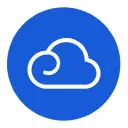Applicant Tracking System (ATS) Software
What is an applicant tracking system?
An Applicant Tracking System (ATS) is software that helps companies manage their job application process more efficiently. The system stores resumes and job applications and helps recruiters screen candidates. It tracks applicant progress, enables hiring teams to collaborate effectively, and simplifies the recruitment process for companies. This makes it easier for them to find and hire the best candidates for their job openings.
Applicant tracking software vendors and pricing
Here are some of the most popular ATS software vendors, click through to see what actual buyers like you pay for them.
When do I need an applicant tracking system?
An Applicant Tracking System can be useful to almost any size business or organization. Companies typically consider purchasing ATS software when they experience challenges in managing their recruitment process efficiently. Here are some specific situations that lead companies to buy ATS software:
- Difficulty Managing High Volume of Applications: Unable to keep up with large number of job applications, causing delays and missing out on qualified candidates.
- Disorganized Candidate Data: Candidate details scattered across spreadsheets and emails, making it hard to keep track, schedule, and follow-up with them.
- Poor Communication and Candidate Experience: Issues with timely communication between recruiters, hiring managers, and candidates leads to delays in scheduling interviews, providing updates, and potential loss of candidates.
- Compliance Concerns: Requirements to ensure compliance with data privacy laws (like GDPR or CCPA) and Equal Employment Opportunity (EEO) rules.
- Growth Struggles: Difficulty scaling recruitment efforts to meet the company’s expanding needs.
- Lack of Insights: Inability to analyze recruitment metrics such as time-to-fill or source of hire, making it harder to improve hiring processes.
Must-have features of applicant tracking software
Every applicant tracking system has a different set of features that makes them unique, but the most common features of ATS software include:
- Job Posting Management: Manage creation and posting of job openings across multiple platforms.
- Candidate Management: Centralize candidate data, resumes, and communications for easy access.
- Resume Parsing: Automatically extract and organize candidate information from resumes.
- Communication Tools: Integrate email templates and scheduling for streamlined candidate interactions.
- Reporting and Analytics: Provide insights into recruitment metrics for data-driven decisions.
- Compliance and Security: Adherence to data protection regulations, security protocols, and audit trails.
Who are the key stakeholders of an ATS?
While recruiters will be the primary users of ATS software, they’ll need to coordinate with hiring managers, interviewers, sourcers, and talent coordinators. Companies should also consider the job applicants as stakeholders since the ATS will be one of the primary ways for them to interact with the company.
Common applicant tracking software pricing models
The two most common pricing models for Applicant Tracking Systems are either a flat platform fee or a per user cost. The price itself is determined by the number of employees at the company. Some may charge an additional fee for premium features like automated outreach, onboarding, or integrations with an HRIS or other systems.





